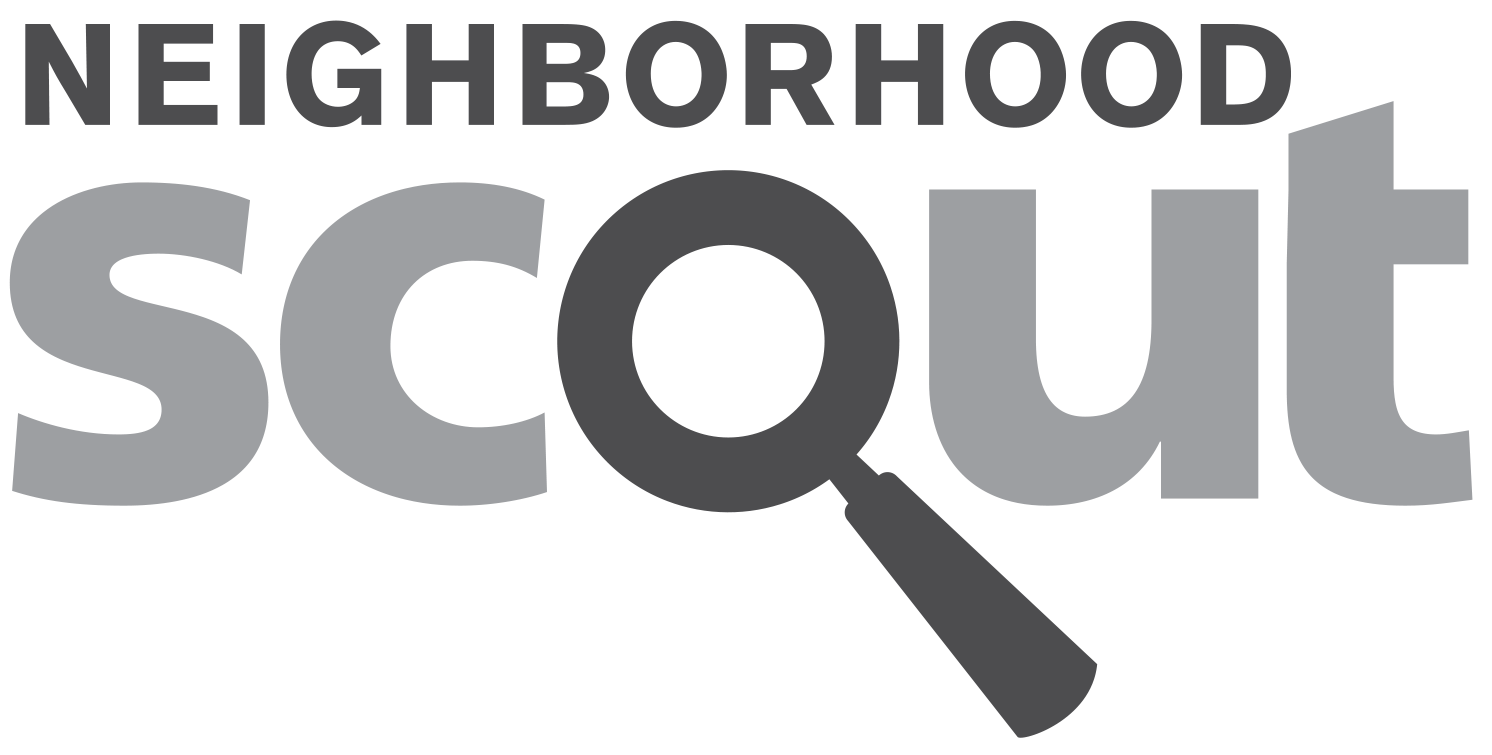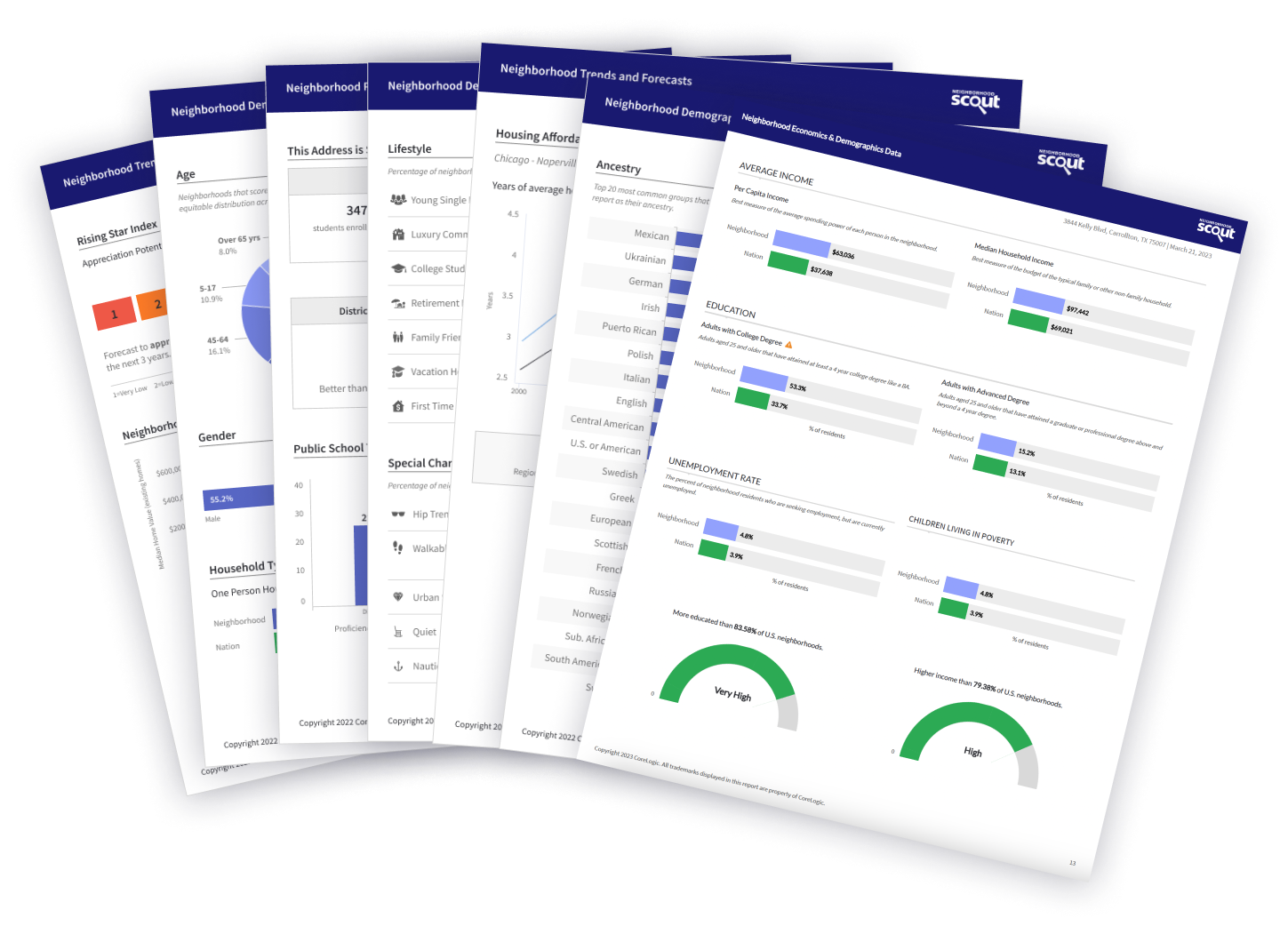Irving Park Northeast median real estate price is $371,001, which is more expensive than 63.4% of the neighborhoods in Illinois and 48.9% of the neighborhoods in the U.S.
The average rental price in Irving Park Northeast is currently $2,660, based on NeighborhoodScout's exclusive analysis. The average rental cost in this neighborhood is higher than 76.0% of the neighborhoods in Illinois.
Irving Park Northeast is a densely urban neighborhood (based on population density) located in Chicago, Illinois.
Irving Park Northeast real estate is primarily made up of small (studio to two bedroom) to medium sized (three or four bedroom) apartment complexes/high-rise apartments and small apartment buildings. Most of the residential real estate is occupied by a mixture of owners and renters. Many of the residences in the Irving Park Northeast neighborhood are relatively historic, built no later than 1939, and in some cases, quite a bit earlier. A number of residences were also built between 1940 and 1969.
Home and apartment vacancy rates are 8.1% in Irving Park Northeast. NeighborhoodScout analysis shows that this rate is lower than 47.6% of the neighborhoods in the nation, approximately near the middle range for vacancies.
When you see a neighborhood for the first time, the most important thing is often the way it looks, like its homes and its setting. Some places look the same, but they only reveal their true character after living in them for a while because they contain a unique mix of occupational or cultural groups. This neighborhood is very unique in some important ways, according to NeighborhoodScout's exclusive exploration and analysis.
In a nation where 1 out of every 4 children lives in poverty, the Irving Park Northeast neighborhood stands out as being ranked among the lowest 0.0% of neighborhoods affected by this global issue.
In addition, the types of households in a neighborhood can tell a lot about the character and lifestyle of those living here. NeighborhoodScout's exclusive analysis reveals that this neighborhood, above nearly every neighborhood in America, has a greater percentage of its residents living alone: 50.6%. This is a higher percent living alone than we found in 96.0% of all U.S. neighborhoods. Often residents who live alone are new arrivals to an area who are single, and often senior citizens who have lost a spouse.
If you like crowded places, then you will probably enjoy the the Irving Park Northeast neighborhood. According to NeighborhoodScout's exclusive data analysis, this neighborhood is more densely populated than 96.4% of neighborhoods in the U.S., with 26,687 people per square mile living here. Even if you drive or take transit to your place of employment, many people enjoy being able to walk in their neighborhood. What many people don't realize is that most of America's premier vacation locations are also very walkable. The Irving Park Northeast neighborhood is among the top 5% of American neighborhoods in terms of walkability.
In addition, corner bodegas, stores on the first floor and apartments above, former grand Victorian residences converted into apartments, three-deckers built shoulder-to-shoulder, duplexes. Such building types define the real estate of neighborhoods dominated by small 2, 3, and 4 unit apartment buildings. Many are in older core neighborhoods of Eastern and Midwestern cities, or historic town centers in their hinterlands. If you wax romantic about the look and feel of such neighborhoods, with fresh pizza, falafel and an independent florist at the corner, then you might find the Irving Park Northeast neighborhood worth a close look. This neighborhood is an absolutely outstanding example of the dominance of small 2, 3, and 4 unit apartment buildings compared to neighborhoods across the nation, as they make up a substantial portion of this neighborhood's real estate stock. In fact, no less than 36.3% of the real estate here is made up of such dwellings, which is higher than 96.3% of all U.S. neighborhoods.
Furthermore, do you watch 'This Old House' on Public Television? Do you love the idea of fixing up a Colonial or Victorian era home, complete with the charm of yesteryear? Do you like to stroll or drive streets lined with gracious older residences? If you found yourself nodding yes to any of these questions, you are going to be interested in this unique neighborhood. The Irving Park Northeast neighborhood stands out on a national scale for the sheer concentration of historic residences it contains: 61.1% of the residential real estate here was built from 1939 or earlier, some much earlier. This is a greater concentration of historic homes than 96.8% of the neighborhoods in the United States.
In the Irving Park Northeast neighborhood, 18.4% of people ride the train to work each day. This is a very high percentage compared to most places. In fact, NeighborhoodScout's analysis reveals that this is a higher level of train ridership than in 97.0% of the neighborhoods in America.
Also, would you like to be able to ride your bike to work? If you are attracted to the idea of getting a little exercise of the two-wheeled type while reducing your carbon footprint, bicycling to work might be the answer. But which neighborhood you live in can make this either impossible, or alternatively, a great and realistic option. NeighborhoodScout's analysis revealed that the Irving Park Northeast neighborhood is a fantastic option for bicycle commuters, as 3.5% of commuters here do ride their bikes to and from work on a daily basis. This is a higher amount than we found in 96.7% of the neighborhoods in America.
Did you know that the Irving Park Northeast neighborhood has more South American and French Canadian ancestry people living in it than nearly any neighborhood in America? It's true! In fact, 8.7% of this neighborhood's residents have South American ancestry and 2.5% have French Canadian ancestry.
Irving Park Northeast is also pretty special linguistically. Significantly, 1.6% of its residents five years old and above primarily speak Japanese at home. While this may seem like a small percentage, it is higher than 98.6% of the neighborhoods in America.
There are two complementary measures for understanding the income of a neighborhood's residents: the average and the extremes. While a neighborhood may be relatively wealthy overall, it is equally important to understand the rate of people - particularly children - who are living at or below the federal poverty line, which is extremely low income. Some neighborhoods with a lower average income may actually have a lower childhood poverty rate than another with a higher average income, and this helps us understand the conditions and character of a neighborhood.
The neighbors in the Irving Park Northeast neighborhood in Chicago are upper-middle income, making it an above average income neighborhood. NeighborhoodScout's exclusive analysis reveals that this neighborhood has a higher income than 62.8% of the neighborhoods in America. In addition, 0.0% of the children seventeen and under living in this neighborhood are living below the federal poverty line, which is a lower rate of childhood poverty than is found in 100.0% of America's neighborhoods.
A neighborhood is far different if it is dominated by enlisted military personnel rather than people who earn their living by farming. It is also different if most of the neighbors are clerical support or managers. What is wonderful is the sheer diversity of neighborhoods, allowing you to find the type that fits your lifestyle and aspirations.
In the Irving Park Northeast neighborhood, 54.7% of the working population is employed in executive, management, and professional occupations. The second most important occupational group in this neighborhood is sales and service jobs, from major sales accounts, to working in fast food restaurants, with 27.7% of the residents employed. Other residents here are employed in manufacturing and laborer occupations (10.5%), and 7.2% in clerical, assistant, and tech support occupations.
Languages
The most common language spoken in the Irving Park Northeast neighborhood is English, spoken by 64.8% of households. Some people also speak Spanish (22.2%).
Ethnicity / Ancestry
Culture is the shared learned behavior of peoples. Undeniably, different ethnicities and ancestries have different cultural traditions, and as a result, neighborhoods with concentrations of residents of one or another ethnicities or ancestries will express those cultures. It is what makes the North End in Boston so fun to visit for the Italian restaurants, bakeries, culture, and charm, and similarly, why people enjoy visiting Chinatown in San Francisco.
In the Irving Park Northeast neighborhood in Chicago, IL, residents most commonly identify their ethnicity or ancestry as German (19.8%). There are also a number of people of Irish ancestry (19.3%), and residents who report Mexican roots (12.9%), and some of the residents are also of Asian ancestry (9.8%), along with some Polish ancestry residents (8.7%), among others. In addition, 21.6% of the residents of this neighborhood were born in another country.
How you get to work – car, bus, train or other means – and how much of your day it takes to do so is a large quality of life and financial issue. Especially with gasoline prices rising and expected to continue doing so, the length and means of one's commute can be a financial burden. Some neighborhoods are physically located so that many residents have to drive in their own car, others are set up so many walk to work, or can take a train, bus, or bike. The greatest number of commuters in Irving Park Northeast neighborhood spend between 30 and 45 minutes commuting one-way to work (41.8% of working residents), which is at or a bit above the average length of a commute across all U.S. neighborhoods.
Here most residents (42.4%) drive alone in a private automobile to get to work. In addition, quite a number also take the train to get to work (18.4%) and 11.8% of residents also carpool with coworkers, friends, or neighbors for their daily commute. In a neighborhood like this, as in most of the nation, many residents find owning a car useful for getting to work.

